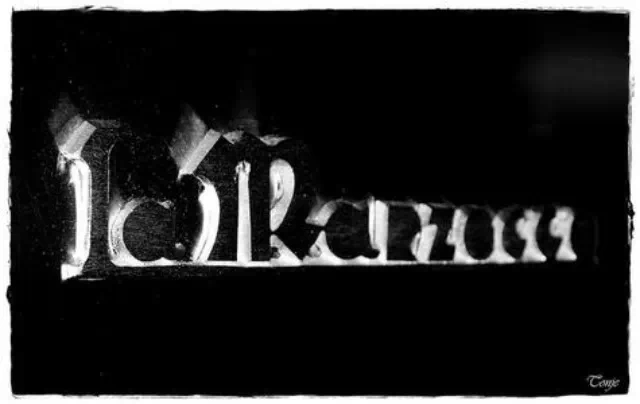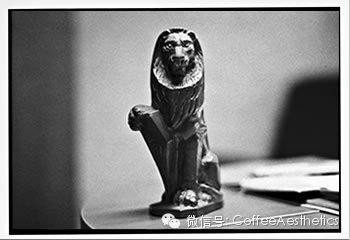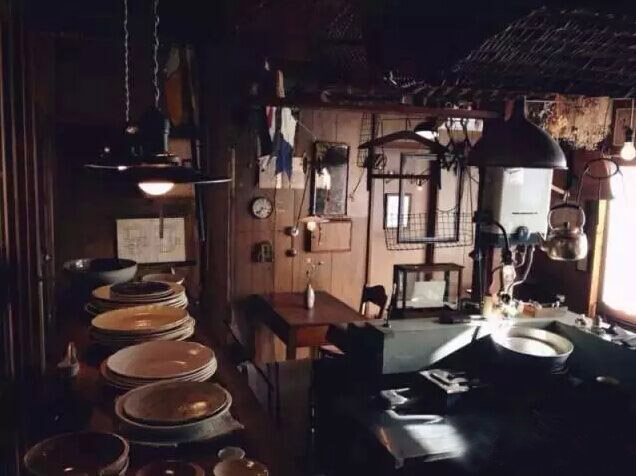LA ·MARZOCCO ·2 of Russ in Coffee Machine-History
Giuseppe Bambi uses "Marzocco" (a lion sitting on a Florentine lily) as a symbol of victory and success, and names the company La Marzocco.

At that time, manufacturers were not only skilled craftsmen, but also pioneers in thinking about the difficulties and challenges they faced at that time. Giuseppe Bambi is a member of this pioneer group. He has a strong personality and wants to create something of his own and eventually build a small factory and have his own business.

After producing several models of coffee machines called "Fiorenza" for a customer, Giuseppe teamed up with his brother Bruno to design and make coffee machines independently. In 1927, Officina Fratelli Bambi was founded. In addition to designing machines, they also produced various parts, assembled and sold machines, which was a great success at that time. Soon after, Giuseppe Bambi used "Marzocco" (a lion sitting on a Florentine lily) as a symbol of victory and success, and named the company La Marzocco.
After fascism began to prevail, the wind of change began to spread, which was reflected in the decorative style. While La Marzocco continued to build machines with vertical coffee boilers, it also began to design a more sophisticated machine chassis with a more linear feel.
As more and more people like to drink coffee in coffee shops, it is becoming more and more necessary to reduce the size of the coffee machine and increase the output of coffee.
On February 25th, 1939, Giuseppe Bambi registered the patent for the world's first espresso machine with a horizontal boiler. This new design means that all coffee brewers can be arranged in a straight line, which not only produces a lot of coffee at the same time, but also makes the operation of the machine easier and faster.

Coffee consumption has been growing slowly and continuously, so it is necessary to make coffee machines that are smaller but produce more coffee. In 1939, Giuseppe Bambi patented the horizontal boiler coffee machine, which was the first coffee machine with a straight line of coffee brewers. The horizontal coffee machine can add more than one brewing head and simplify the operation of the machine.
The 1950s was characterized by a pull-rod coffee machine, which uses springs to stimulate the piston so that the water pressure through the coffee reaches about 10 atmospheres. This technology has not only changed the traditional method of filtering coffee, but also changed the taste of coffee. The advent of "coffee oil" has become the standard of espresso extraction overnight. In order to reduce the physical exertion of baristas, electric gear motors are added.
As a result, the first coffee machine equipped with automatic water pressure control and electric motor was born.
In 1961, a new company headquarters was established on a hill overlooking Florence.
After the flood that swept Florence in 1966, La Marzocco faced a complex economic situation, although it was not directly affected. The law allows customers in flood-affected areas to postpone payment, but the company must continue to operate at its own expense. Patience and perseverance kept La Marzocco from moving forward, and in 1970, La Marzocco launched the GS series.
It turns out that the independent double-boiler coffee machine of the GS series is a revolutionary innovation in the world. One boiler is used for hot water and steam, while the other is used to extract coffee. Up to now, the independent double boiler is still the standardized configuration of the La Marzocco machine, and the water temperature in the coffee boiler will not be disturbed when steam or hot water is easily provided. In Italian, GS means "saturated group", which means saturated head. The brewing head is directly connected to the coffee boiler and is designed as an extraction chamber so that the water can circulate continuously, keeping the temperature constant, which is a key factor in making top coffee.
The launch of the GS series coffee machine has been an immediate success in Italy and abroad, and it can be said to be a legend. After the GS series, new designs and machines continue to emerge, and incorporate the original GS technology, including GS-2, Linea and FB/70 series coffee machines.
Since 1995, La Marzocco has begun to reorganize its corporate structure, including production, management and technical assistance. The company employs qualified technicians and bilinguals to promote transactions with foreign markets and successfully set up a marketing and sales office in Milan, Italy.
From 2000 to 2008, La Marzocco was the official espresso sponsor of the World barista Competition (WBC), an internationally renowned coffee competition that focused on strengthening the professionalism of baristas and promoting excellence in the coffee industry.
The company launched the GB/5 coffee machine in 2005, followed by the FB/80 in 2006 and the single-headed GS/3, a locally made specialty coffee machine, in 2007. Each machine is equipped with PID temperature control equipment, multi-function keyboard and digital display screen, reflecting the latest technological innovation on the market.
The manual "putter" configuration, launched at the same time as the original GS series, was reintroduced in the second half of 2008 and applied to all standard coffee machines for flexible pre-soaking, so baristas can control multiple variables and combine to produce the best espresso.
La Marzocco has not forgotten the past. After the company was reorganized in 2009, the company moved to a brand new factory 30 kilometers north of Florence, and the equipment was completely updated.
In the first half of 2009, the company launched a series of Strada coffee machines. Under the specialized research of the top baristas, technicians and marketing experts, the pressure distribution technology was pioneered and put into production in September 2010.
The Vulcano bean mill, which combines the unique design of La Marzocco and the unique technology of Mazzer, was launched in Milan in October 2009 and put into production in the autumn of 2010.

"you can learn skills, but enthusiasm can only be generated by being dedicated, loving, proud and respectful to your work." -Piero Bambi
Source: coffee aesthetics
Important Notice :
前街咖啡 FrontStreet Coffee has moved to new addredd:
FrontStreet Coffee Address: 315,Donghua East Road,GuangZhou
Tel:020 38364473
- Prev

The secret of the rumor: does drinking coffee help you stay healthy?
Some people like coffee, some people like iced coffee, and others don't like coffee at all. Until recently, some people said that if you want to stay healthy, you'd better quit coffee. You don't have to quit coffee anymore. Because of the systematic summary of the results of the study, this is the most powerful way to measure the scientific evidence, which shows that most of the evidence is in support of coffee consumption. Premature death rate, Ⅱ type glycosuria
- Next

Common sense of Cafe Management the three elements of successfully running a Cafe
Coffee shop is in the form of fixed-point business, that is, in the form of sales; it is like a tree fixed in a site to take root and sprout, so some people call it a plant-based enterprise, but in today's marketing-oriented era, consumer demand and desire make the business constantly changing. With the gradual diversification and personalization of consumer consciousness, coupled with the increasingly fierce market competition, it is absolutely necessary to operate in cafes.
Related
- Being chased out of the rain in front of Starbucks?! Store: Sheltering from rain under umbrellas poses a safety hazard
- The white moonlight has changed?! Lucky launches "Big Winter Pear American"
- Hand-brewed coffee three-stage method, high-sweet and universal brewing method to share! What does the high sweet water level of hand-brewed coffee mean?
- What is the difference between raw, refined and full espresso coffee? How to extract espresso and taste good?
- A complete list of coffee bean names and their meanings! What is Yejia Shefi coffee? Where is Mantelin coffee?
- What grade does Arida Manor Kaduai coffee beans belong to? What treatment is Arida ASD slow anaerobic sun exposure?
- The milk tea cup becomes smaller?! Overlord Tea Girl launches a new "Return to Yunnan" series
- Accused of selling counterfeit and high-priced coffee beans! Well-known boutique coffee brand "Oukelao" bowed and apologized!
- How to make espresso dumplings? Can I eat coffee and glutinous rice balls together?
- Save the unformed and stagnant powder cakes in one second! What is the problem with stagnant water in the powder bowl of the espresso machine?

